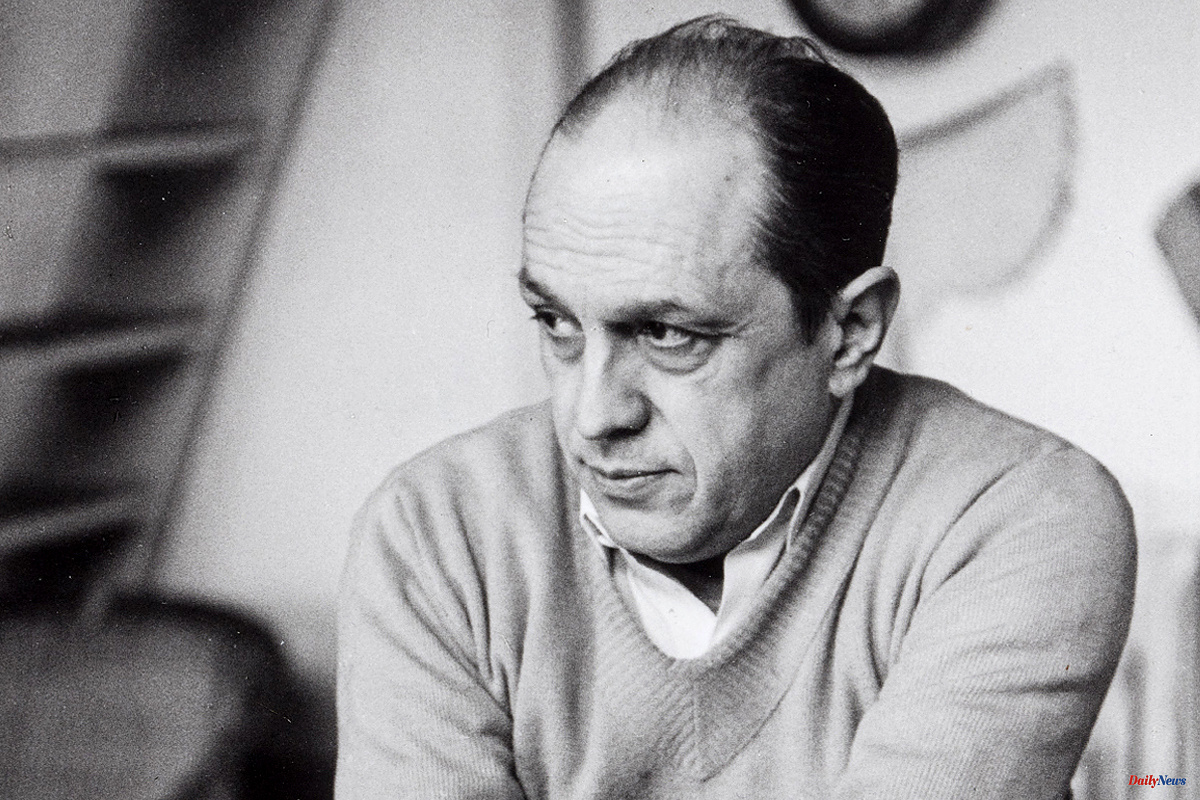It has always been said that at the 1925 Exhibition of Iberian Artists at the Retiro Palace there were more painters than visitors. Dalí, Benjamín Palencia, Alberto Moreno Villa and, among many others, Francisco Bores participated with 16 oil paintings and watercolors. But that was a fiasco. It barely had an echo. That same year, disappointed, Bores went to Paris to breathe, to paint without limits. And, above all, to search. He just came back.
The rainbow of the avant-garde, the herd of styles and movements of the 20s and 30s, were lived on the front line by Francisco Bores (Madrid, 1898-Paris, 1972). The exhibition that the Student Residence has organized on the occasion of the 50th anniversary of his death gives an account of all this. Curated by UNED professor Genoveva Tusell, it brings together more than a hundred works including oil paintings, drawings and engravings. And some of his reflections on art (the excellent catalog includes more), such as these that illuminate his style and his claims:
- «Painting is a sensual act, it can be considered as a fruit that we savor with our fingers, its skin is identified with ours».
- «A painting must above all have what in Spain is called 'duende', and when this does not exist, the structure alone cannot truly satisfy».
- «I don't make the painting a priori, when I start it I don't know how I'm going to finish it».
His constant restlessness, the insatiable search, can be seen in the sample. «He is very interested in cubism, but also surrealism, which influenced him more. He has a very personal style, he does not belong to any school », comments Genoveva Tusell in the Residence itself, where Bores used to go. When he was not around there, he participated in some of the many gatherings of the time, the case was not studying Law, like his father (who became governor of the Philippines) or an engineer, like his maternal grandfather. "In 1922 I really began to get upset, according to my teachers," said the artist, who also did not want to enter the School of Fine Arts. On the other hand, he did go to the Prado Museum to copy Velázquez.
The chronological exhibition begins with works from his youthful period, from 1922/3. They belong to the Residencia fund, which bought them from Carmen Bores, the artist's daughter. There are drawings of his friends and personalities of the time, from Lorca to Gómez de la Serna, passing through Moreno Villa or Adolfo Salazar. Also the illustrations for covers and back covers of the Revista de Occidente and for books that he edited.
The sample includes still lifes where the shadow of Cézanne and cubism can be appreciated. In the windows of the building on Calle Pinar there is a succession of Toasts at a Banquet (circa 1923), Patio de Butacas con Público (1923) -a sinuous movement in that one with watercolor colours-, various nudes in pencil or charcoal, still lifes in the Braque or a peculiar Chinese ink, Foot-ball (circa 1923). Everything very light, urgent, in keeping with the times when electric lighting, literary cafes and sports went hand in hand towards a modernity of colors and daring shapes.
«He was stinging on everything and was aware of the entire vanguard. Ultraism, which has so much to do with literature, came from the decisive hand of Guillermo de Torre. And to the xylography, thanks to the painter Norah Borges, sister of Jorge Luis Borges and wife of De Torre. Bores dedicated 1922 and 1923 to wood engraving, which is why he did illustrations for many ultraist magazines. These woodcuts have to do with both cubism and futurism”, adds Genoveva Tusell, author of El 'Guernica' recobrado (Cátedra).
If the exhibition highlights that period, it is because it is the least known of the artist. In Paris everything precipitated. Pancho Cossío, a close friend of his, protected him when he arrived in 1925. In June 1927 he exhibited individually for the first time, at the Percier gallery. In 1927 and 1928 he was in contact with Jules Supervielle, Max Jacob, Jean Cocteau, Louis Aragon, André Breton, Paul Éluard and Man Ray. And in 1930 he married Raïa Perewozka, of Jewish origin and a native of Vilnius (Lithuania).
The first pictures that he paints in the city where no one slept reflect the bustle of the cafes. He does not paint collages but imitates what collage is, he imitates a letter pasted on the painting but does not paste the letter on the canvas. And he does the same thing with newspaper pages, with picture frames, with pieces of rope, says Tusell. "In two years his change is dizzying."
«Everything unfolded in front of me like pharmacy jars with incomprehensible labels. I was trying something of everything, hoping to find the magic drug that produces happiness and long life. I understood in time that this impulse that makes the young painter manifest is worth more than all the prescriptions and I decided not to go back to the pharmacy anymore," said Bores.
From the neo-cubist stage (1925-1929) he passed to the so-called "Fruit Painting" (1929-1933), a reflection of his fascination with the luminosity of Provence. Then comes a return to the interiors (1938-1949), focused on everyday life. Finally, the so-called «White Manner» (1950-1955): «I kept searching, aspiring to a greater luminosity, disembodied more and more the figures», he commented.
"Light and color", highlights Tusell. «And the richness of the tonalities. Look at that blue that seems to be coming through the window. Another painting that draws attention is Les fruits rouges, The Red Fruits, from 1967: what appear to be apricots burst into shades of lemon yellow with overwhelming vitality. Next door, Bar de matelots, Bar for sailors, from 1938, full of contrasts at night. "It's like he's talking," Tusell suggests. And as a finish, some delicate notes for the stained glass windows of a chapel. Pure Bores.
According to the criteria of The Trust Project












